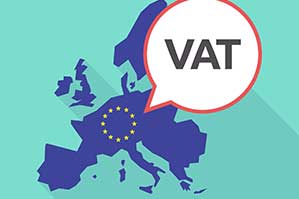
The following is based on an assumption the exporting company is VAT registered and that the annual exports to the EU are under £250,000 in value which is below the current Intrastat threshold.
N.B. – VAT (Value Added Tax) is referred to by different names across the world, for example USA = Sales Tax, France = TVA, Australia = GST. For the purposes of this article the term VAT will be used to cover all countries.
First of all, you need to split your customers into three separate groups:
- Consumers and businesses that are not registered for Tax residing in the EU.
- Businesses customers residing in the EU who are registered for VAT.
- Any business and consumer customers residing outside of the EU.
You can find a list of the 28 EU countries here: https://europa.eu/european-union/about-eu/countries_en, you’ll notice that countries like Norway and Switzerland are not on this list. This is because they are located on the European continent but NOT within the European “Union” so you would treat them as “Any business and consumer customers residing outside of the EU”.
Consumers and businesses that are not registered for VAT residing in the 28 EU Countries

When exporting product from the UK to consumers and small businesses that are not registered for VAT in their own country, you must charge them UK VAT on the invoice total including postage.
Businesses customers residing in the EU who are registered for VAT

If you are sending product to a business that is registered for VAT in their own country, then there is a special treatment available called the “Reverse charge mechanism” This rule was made so EU businesses could simplify trade with each other by enabling you to zero rate your invoice and for the business customer to account for VAT in their own country.
If you have a business customer who states they are registered for VAT in their own country then you can use this tool to check validity of their VAT status here: http://ec.europa.eu/taxation_customs/vies/?locale=en. As you’ll remain responsible for the decision to zero rate, you need to be sure the customer is definitely VAT registered. You should ask for additional proof should the VAT checking tool not match their current details.
Once you are satisfied that they are registered for VAT, then you can zero rate the VAT on your invoice to them (You’ll need to include the following statement on your invoice “reverse charge: VAT Act 1994 Section 55A applies”).
One important thing to remember here is that you will need to complete an “EC SALES LIST” for HMRC once a quarter or once a month if your sales exceed £35,000. This will list the VAT numbers of the companies you have sold to with the reverse charge mechanism and the amounts you have traded with them in that period. Once your accountant/bookkeeper fills in box 8 of your next VAT return, this should automatically trigger HMRC to send you an EC SALES LIST to complete. More information can be found here: https://www.gov.uk/guidance/vat-how-to-report-your-eu-sales
Any business and consumer customers residing outside of the EU.
When exporting to any other country outside of the EU, you don’t need to charge UK VAT and your invoices should be zero rated for UK VAT. Courier services for international destinations are also exempt from VAT. This is because the customs authority of the destination country will value the goods entering their country and charge the recipient any import duty and local VAT based on the total cost of the product and shipping.
It’s worth conveying that there could be import duty and local VAT due on purchases from your overseas customers. Experienced importers will already know this but consumers, small businesses or new importers may not.